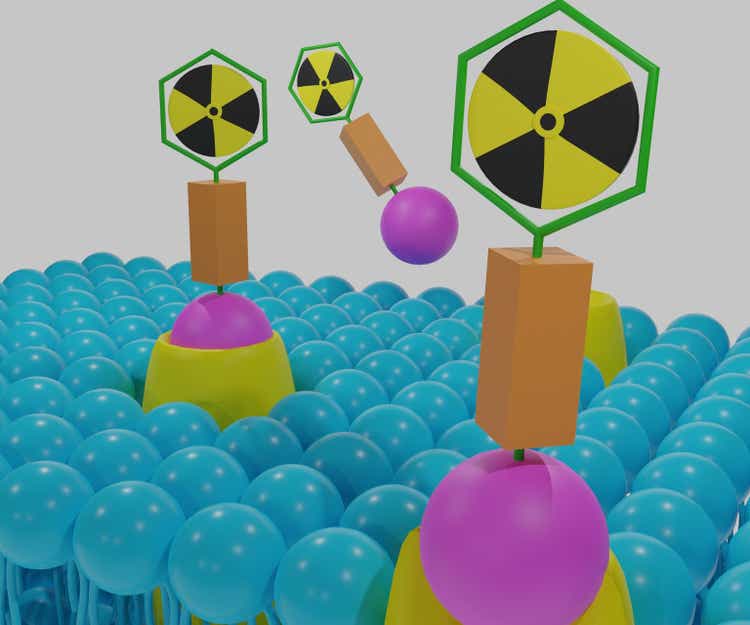
Love Employee/iStock via Getty Images
The international market for radiopharmaceuticals is expected to reach $13.67B by 2032, with a compound annual growth rate of 10.2% from 2023, according to a recent report from Precedence Research, a global provider of market insights.
The market where Pluvicto and Lutathera from Novartis (NYSE:NVS) (OTCPK:NVSEF) are among some of the well-known radiopharmaceuticals reached $5.7B in 2023, up from about $3.9B in 2017, according to Precedence.
Its report coincided with a flurry of deal-making activity in the radiopharma space in recent months. In December, Eli Lilly (NYSE:LLY) acquired Point Biopharma Global (PNT), a biotech focused on radioligand therapies, for $1.4B.
Shortly before that, Bristol Myers Squibb (NYSE:BMY) offered $4.1B to acquire radiopharma company RayzeBio (RYZB) in a deal expected to close in H1 2024. BMY warded off two other significant offers from rivals in its bid for the newly-IPO’ed biotech, according to RayzeBio’s (RYZB) proxy statement.
In May 2023, Bayer (OTCPK:BAYRY) partnered with Bicycle Therapeutics (BCYC) to develop a new class of radiopharmaceuticals for cancer.
More than 50 radiopharmaceuticals are currently available on the market, and many more are undergoing clinical trials, most designed to treat cancer.
With radiopharmaceuticals containing radioactive elements, the radiopharma market growth mainly depends on government funding and its support for nuclear medical research and studies.
However, speed and accuracy are critical and expose the industry to potential supply-side issues, including the timely availability of radioactive elements as radioactive compounds decay within days.
With radiopharmaceuticals being used as treatments and diagnostics, particularly in oncology, the rising prevalence of cancer and an aging population are among the tailwinds for market growth.
The diagnostics sector was expected to hold the largest market share of 67% in the radiopharma space in 2022. However, the therapeutics segment is projected to grow at the fastest pace over the forecast period amid the rising global prevalence of cancer and chronic ailments.
In terms of medical applications, cancer accounted for more than 53% of radiopharma revenue in 2022. Still, cardiology is expected to witness the fastest growth over the forecast period due to radiopharma’s use in diagnostics.
Against this backdrop, North America contributed to the highest revenue share in the radiopharma space in 2022, generating 44% of global revenue, driven by factors such as supportive regulatory frameworks, technological advancements, and the high prevalence of chronic illnesses.
However, Asia Pacific is expected to generate the fastest growth over the forecast period due to the region’s aging population, fast-changing regulatory environment, and improving health infrastructure.
Other players in the radiopharma market include Lantheus (LNTH), Perspective Therapeutics (CATX), PeptiDream (OTCPK:PPTDF), Telix Pharma (OTCPK:TLPPF), Actinium Pharma (ATNM), Fusion Pharma (FUSN) and its partner AstraZeneca (NASDAQ:AZN), CASI Pharma (CASI), Radiopharm Theranostics (OTCPK:RDPTF), Cellectar Bio (CLRB), Clovis Oncology (CRDF) and QSAM Bio (OTCQB:QSAM).











